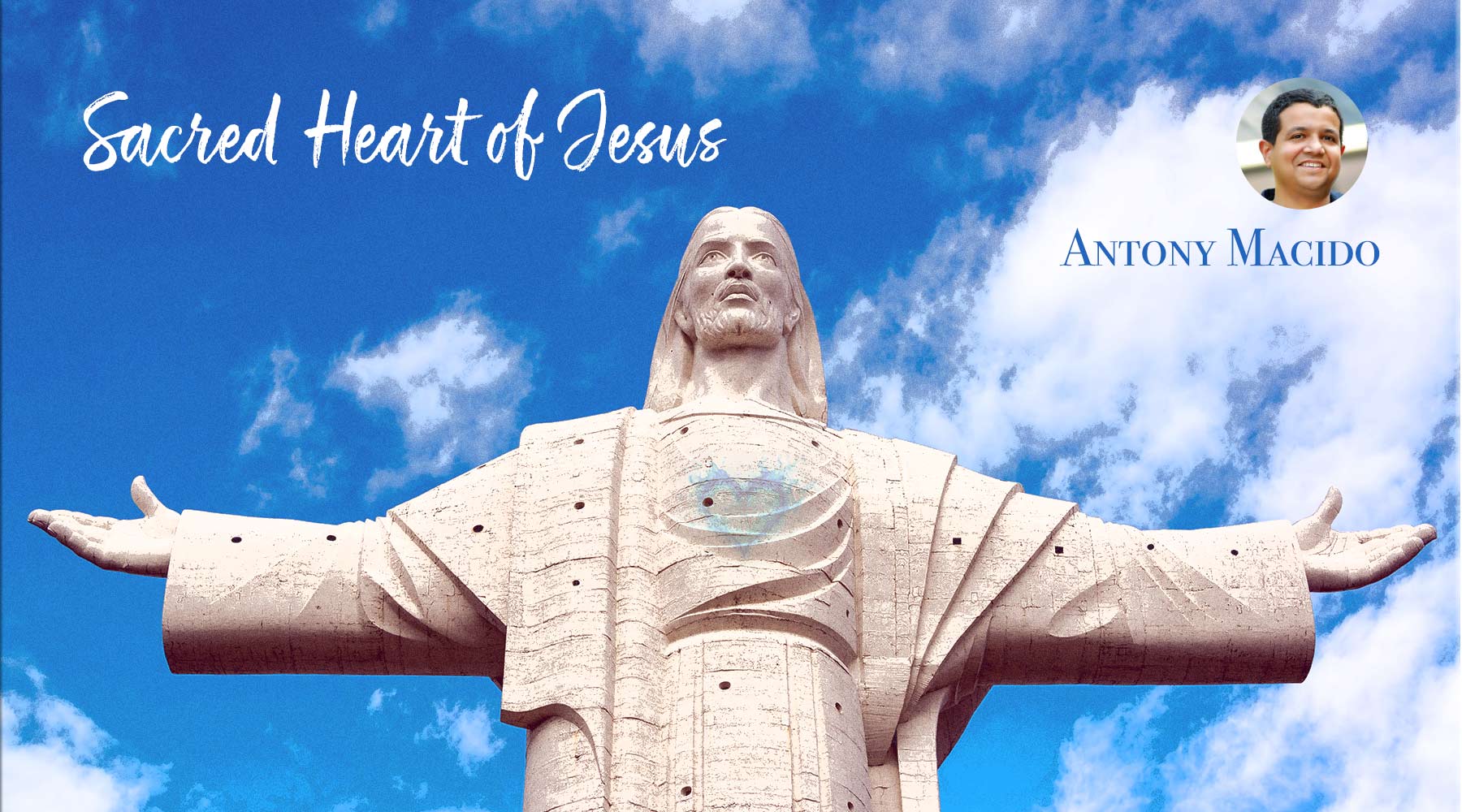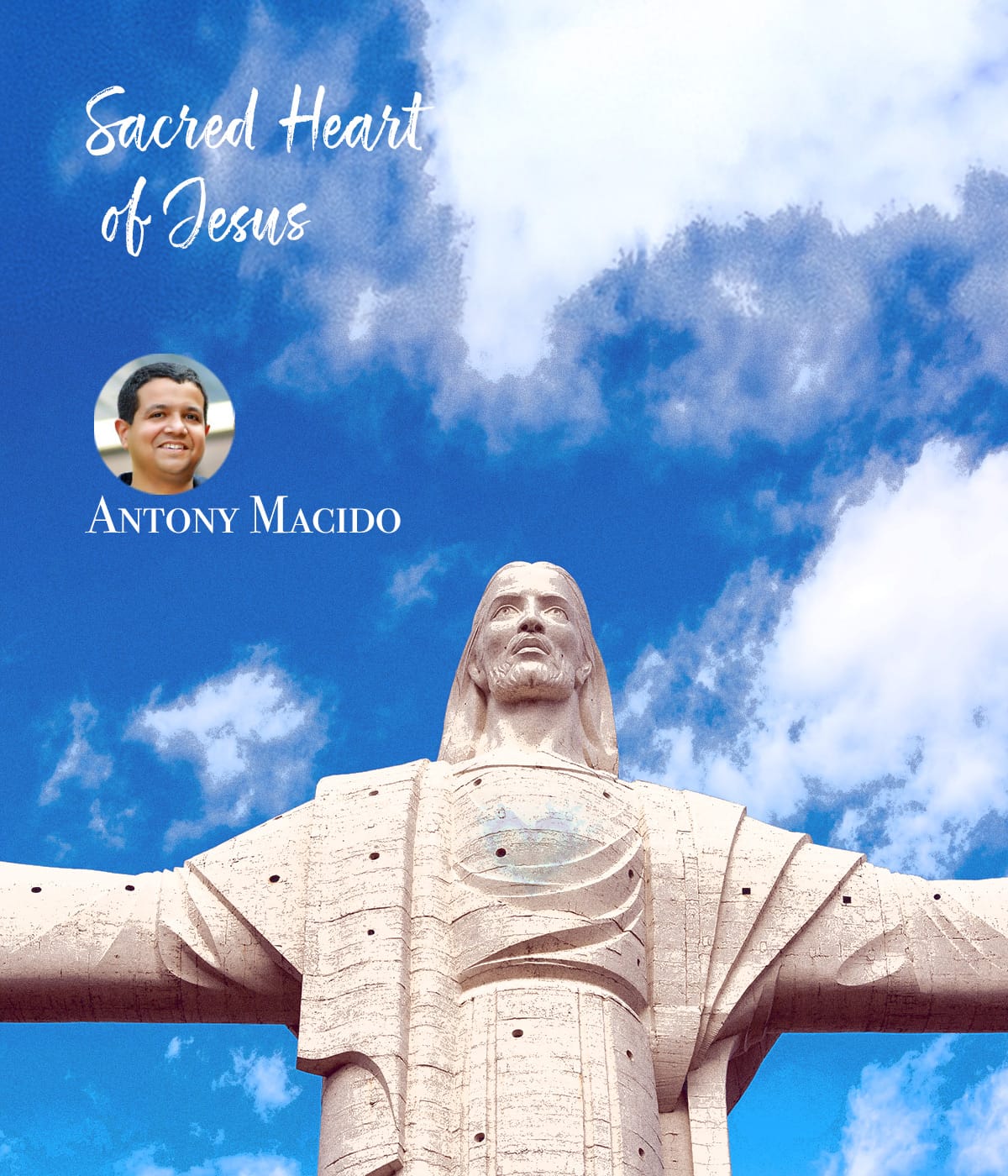

The Sacred Heart of Jesus is one of the most popular images that comes to our mind when we think about Jesus. The Sacred Heart of Jesus is often displayed in many homes and religious institutions. The Sacred Heart signifies God’s love displayed in the pierced heart of His beloved Son. The Catholic Church celebrates the devotion to the Sacred Heart of Jesus on the third Friday after Pentecost. Devotion to the Sacred Heart of Jesus began in the 1670s, when Jesus appeared on multiple occasions to St. Margaret Mary Alacoque, a French nun. Jesus expressed his wish to be acknowledged with the symbol of His heart, asking for the faithful to frequently take Communion, observe the Holy Hour, and repent for any wrongdoing. Crucified and pierced, offering mercy and salvation, the heart of Jesus longs for us to offer our devotion and love in return. The devotion to the Sacred Heart of Jesus was added to the Church calendar in 1856 by Pope Pius IX.
The image of the Sacred Heart has 6 symbolic meanings as below.
- The Heart stands for the anatomical heart of Jesus and His sacrificial love for us.
- The light surrounding the heart represents the divine light that shines in the darkness of this world.
- The cross on the top of the heart stands for Jesus’ Redemptive work from the Cross that saved humanity.
- The flames on the heart symbolize the burning love Jesus has for all of humanity.
- The crown of thorns represents the crown placed on the head of Jesus to torture and mock Him before his crucifixion.
- The bleeding and pierced heart reminds us of the Roman soldier (who later became St. Longinus), who thrust his sword into Christ’s chest, piercing his heart on the cross. From this blood and water gushed forth from the side of Christ.
Some theologians suggest that the blood and water that gushed out from Jesus, in fact symbolize the Baptism and Eucharist. Why did blood and water gush out of Jesus’ chest when St. Longinus pierced the Heart? A retired cardiothoracic surgeon, Dr. Antony de Bono suggested that Jesus probably had a hemothorax (collection of blood in the thorax) and/or pericardial effusion (fluid, often blood around the heart) from savage flagellation by the Roman soldiers before He was crucified. Once Jesus was dead, the blood in Jesus would have separated into two layers: the heavier red cells at the bottom and the lighter watery plasma (often straw colored) on the top. Jesus’ chest wall, when pierced by a spear, made a hole in the chest cavity when the heavier red cells at the bottom came out first followed by the watery plasma. This is what is documented in the Scripture as below.
“But when they came to Jesus and found that he was already dead, they did not break his legs. Instead, one of the soldiers pierced Jesus’ side with a spear, bringing a sudden flow of blood and water.” John 19:33-34.
The Sacred Heart and Human Heart
The heart is one of the first organs to develop during early embryonic development. By the fourth week of embryonic development the heart establishes its four chambers. Human hearts continue to beat from this early embryonic life throughout the lifespan of a person. One of the most important functions of the human heart is to pump oxygen and nutrients to the different organs of the body. At the same time, the heart receives blood that is low in oxygen from different areas of the body that needs to be purified before returning back to the organs for further use. Once the heart stops beating, death ensues. As Catholics, we need to devote to the Sacred Heart of Jesus as the epicenter of our spiritual life so that it functions as a vital organ replenishing our lives with the fruits of the Holy Spirit and empowering us to live a life that reflects the mission of our Church to redeem the love of God in Christ. Just like our heart functions throughout our lives to keep us alive, the devotion to the Sacred Heart of Jesus should be practiced to keep our spiritual lives fruitful. In a similar way that our heart receives impure blood that is purified and pumped back to our organs, devotion to the Sacred Heart of Jesus would help us to purify our thoughts, words, and actions.
Conclusion
The Most Sacred Heart of Jesus (Latin: Cor Jesu Sacratissimum), is one of the most widely practiced Catholic devotions around the world. Just like the human heart, which functions as a vital organ to keep our body functioning normally throughout our lives, the Sacred Heart of Jesus should motivate us to fill our hearts with love and kindness to our fellow beings. Our dedication to the Sacred Heart can be reinforced by frequently taking the Sacraments of Reconciliation and Holy Eucharist. By displaying and respecting the Sacred Heart, we encourage others to feel Jesus Christ’s love for them. Seeing the image of the pierced Heart would inspire us to give our love in return to Jesus. Let us recite this prayer to the Most Sacred Heart of Jesus to show our devotion to the same.
“O most Holy Heart of Jesus, fountain of every blessing, I adore You, I love You, and with lively sorrow for my sins I offer You this poor heart of mine. Make me humble, patient, pure and wholly obedient to Your will. Grant, Good Jesus, that I may live in You and for You. Protect me in the midst of danger. Comfort me in my afflictions. Give me health of body, assistance in my temporal needs, Your blessing on all that I do, and the grace of a holy death. Amen.”


